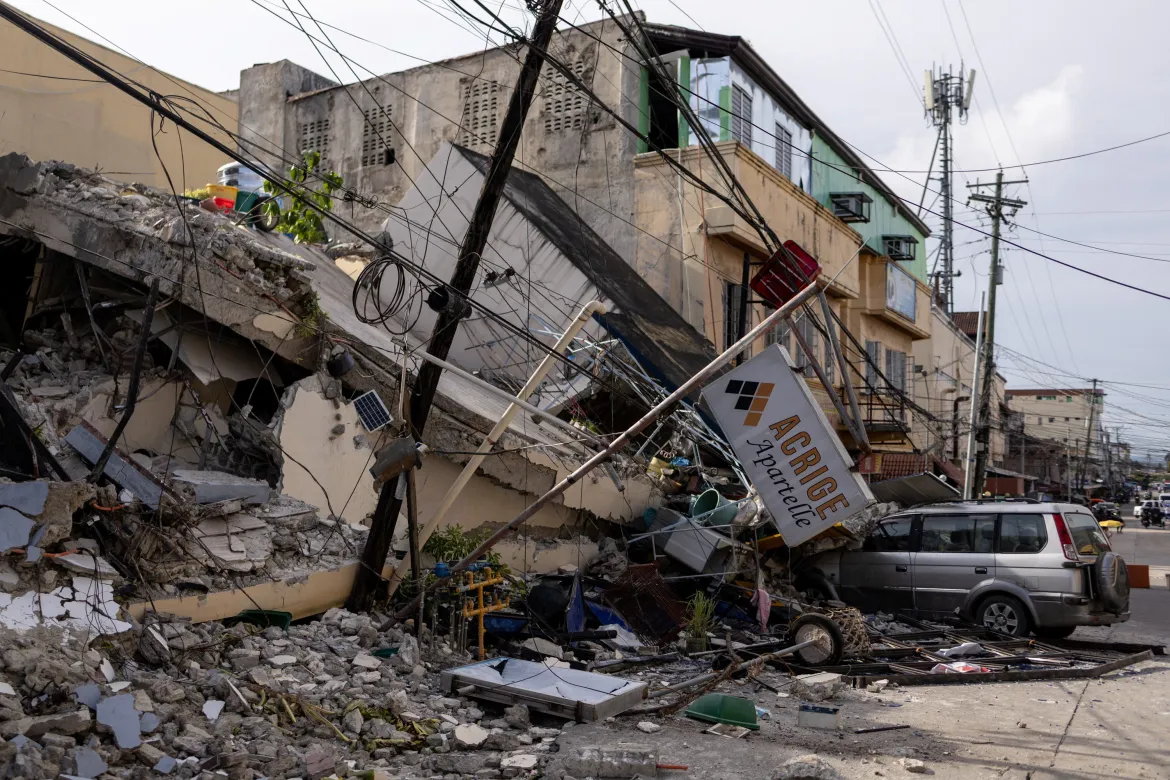Powerful earthquake in Philippines: death toll rises to 72

The death toll from the 6.9-magnitude earthquake that struck the central Philippines has risen to 72, authorities confirmed on Thursday. According to National Disaster Risk Reduction and Management Council (NDRRMC) spokesperson Junie Castillo, all search operations have been completed, with “no more missing persons.” The focus has now turned to helping those injured and displaced by the disaster.
Overnight, rescue teams recovered three additional bodies from the ruins of a collapsed hotel in Bogo City, near the earthquake’s epicenter. With all victims accounted for, some search and rescue units in Cebu province have been ordered to stand down. Government data show at least 294 people were injured and around 20,000 evacuees are sheltering across northern Cebu, many of them sleeping outdoors. Regional officials estimate that more than 110,000 people from 42 communities will need assistance rebuilding their homes and livelihoods.
During a visit to the affected areas on Thursday, President Ferdinand Marcos Jr. announced plans to set up a “tent city” to house residents whose homes were destroyed or who are too frightened to return to their still-standing houses amid ongoing aftershocks. “We will build a tent city that can be quickly assembled and will protect people from the rain,” Marcos said, pledging to provide basic utilities.
Marcos also vowed to restore electricity in Bogo—a city of 90,000—by the end of the day and announced financial aid of 10,000 pesos (about $171) for each family that lost a home. During his visit, he toured a damaged housing project originally built for survivors of Super Typhoon Haiyan in 2013, where eight bodies were recovered.
In a village chapel now serving as a temporary shelter, 18-year-old Diane Madrigal shared her lingering fear: “I’m still scared of the aftershocks. It feels like we have to run again.” Nearby, 43-year-old Lucille Ipil, waiting in line for water, lamented, “The earthquake destroyed our lives. We can’t eat, drink, or bathe properly.”
With the provincial hospital still damaged, many patients remain in tents outside. However, Marcos said government engineers have since declared the building structurally safe, allowing patients to return indoors.
The Philippines sits along the Pacific “Ring of Fire,” a region known for frequent earthquakes and volcanic activity stretching from Japan through Southeast Asia and across the Pacific Ocean.
Sources: aljazeera.com, abcnews.go.com, news.un.org
Media
- Philippines Earthquake: Death Toll Rises To 72, Houses, Infrastructure Destroyed | Scary Visuals Out
- Death toll rises to 72 after Philippines earthquake
Want to read more like this story?

6.7-magnitude earthquake hits Philippines: at least eight fatalities
Nov, 17, 2023 | NewsThe U.S Geological Survey reported a 6.7-magnitude earthquake in the Philippines on Friday. The qua...

6.4-magnitude earthquake in Philippines: at least 26 injuries
Oct, 26, 2022 | NewsAt least 26 people were injured by a magnitude 6.4 earthquake that rocked the northern Philippines,...

Powerful earthquake shakes central Philippines, dozens killed
Sep, 30, 2025 | NewsA powerful magnitude 6.9 earthquake struck central Philippines late on September 30, centered offsh...

Indonesia earthquake: at least 271 fatalities, 40 missing - search for survivors from rescuers
Nov, 20, 2022 | NewsA 5.6 magnitude quake struck a mountainous region in Indonesia on Monday, causing landslides that b...

Afghanistan earthquake: dozens injuries, hundreds of homes destroyed
Jul, 19, 2022 | NewsAn overnight 5.1-magnitide earthquake in a remote southeastern region injured at least 44 people an...

Experts answer: “Why did so many buildings collapse in Turkey?”
Feb, 06, 2023 | NewsFollowing Monday's terrible earthquakes, many of people are reportedly still trapped in the rubble...

Earthquakes: five deadliest earthquakes ever recorded around the world
Feb, 24, 2022 | NewsEarthquakes are one of the most dangerous natural disasters. More than 100 earthquakes of the magni...

5.6-magnitude earthquake struck Nepal: a) at least 157 fatalities, b) search and rescue should be focused on earthquake relief efforts
Nov, 03, 2023 | NewsA strong earthquake claimed the lives of at least 157 people in the remote Jajarkot area of the Him...

A catastrophic 7.1-magnitude earthquake struck Tibet: at least 126 people fatalities
Jan, 07, 2025 | NewsA strong earthquake of 7.1 magnitude rattled a remote region of Tibet. The earthquake hit on Tuesda...
Trending

Spectacular interchanges around the world

New Release - STAAD.Pro 2024 - 2

ADINA 2025 for Structural WorkSuite

ADINA 2025 New Release!

Concrete Buildings as Rechargeable Batteries

Indonesia school collapse: three fatalities and dozens injured

Huajiang Grand Canyon Bridge Opens, Sets New World Height Record

